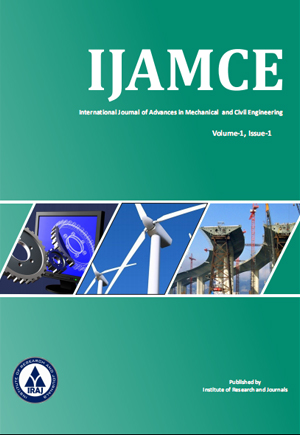Publish In |
International Journal of Advances in Mechanical and Civil Engineering (IJAMCE)-IJAMCE |
 Journal Home Volume Issue |
||||||||
Issue |
Volume-8,Issue-3 ( Jun, 2021 ) | |||||||||
Paper Title |
Explosion Containment in Solid Propellant Processing Area; Using The Concept of Blast Resistant Wall and Optimising the Wall Thickness | |||||||||
Author Name |
M. Pranitha, E. Pavithra | |||||||||
Affilition |
Student, M.Tech Industrial Safety & Engineering, Vel Tech Rangarajan Dr. Sagunthala, R&D Institute of Science and Technology 2Associate Professor, Vel Tech Rangarajan Dr Sagunthala, R&D institute of Science and Technology | |||||||||
Pages |
29-32 | |||||||||
Abstract |
Solid propellant is a high energetic material which is used for launching satellites and propel the rockets. The steps involved in production of solid propellant include raw material preparation, propellant mixing, casting, curing and propellant machining. All the above-mentioned steps are hazardous in nature and involve high risk. Any deviation in the processing may lead to a catastrophic accident that result in explosion. hence it is understood that no person is allowed within the process area when operations are taking place. The shock wave generated from the explosion may propagate to the adjacent buildings like control room etc., where people operate the panel and result in either burn injuries or fatalities. The only method available to protect the workers from getting injured is by containing the blast within the process area by constructing a blast resistant wall. This wall will absorb the shock wave and contain the blast withing the process area. The first step in designing of a blast wall is to evaluate the blast intensity of the propellant. Hence resistant wall of different materials (brick, RCC) are tested for blast loading using ABAQUS software. As the quantity of explosive is directly proportional to the thickness of the wall, the blast resistant wall thickness is optimized by using a sandwiched wall. | |||||||||
| View Paper | ||||||||||